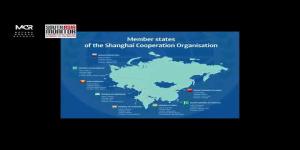South Asia Can Benefit from Its Common Educational Heritage
Initiatives under SAARC, though often criticized as politically dormant, have nonetheless sought to promote educational and cultural exchanges in fits and starts. Projects that highlight shared histories and traditions can help build a stronger regional identity and collective progress. Elements of ancient wisdom — such as holistic learning, ethical education, and personalized mentorship — continue to inspire modern educational reforms across South Asia.

South Asia represents one of the world’s most diverse and populous regions, encompassing a vast range of geographical features — from the lofty Himalayas to the coastal plains. This immense diversity creates both opportunities and challenges for educational systems. Long before the modern states of South Asia came into existence, the region was bound by a remarkable tradition of knowledge and learning. From the ancient universities of Nalanda and Taxila to the literary exchanges across Bengal, Persia, and Kashmir, knowledge once moved freely across borders. Education was not confined by language, religion, or nationality — it was a common civilizational pursuit.
A Shared Educational Heritage
The educational heritage of South Asia stems from rich indigenous traditions dating back thousands of years. The renowned Gurukul system, where students lived with their guru, promoted holistic development and spiritual growth. Similarly, Buddhist viharas and Islamic madrasas enriched the region, offering diverse approaches to knowledge and learning. These traditional foundations continue to influence contemporary educational philosophies and practices across South Asia.
A Region Bound by History
South Asia today consists of ten modern nation-states: India, Afghanistan, Bangladesh, Bhutan, Pakistan, Maldives, Nepal, and Sri Lanka. All share a long and intertwined history. Their common cultural heritage can be traced to the Mughal era and, more recently, to British colonization of various territories.
The region accounts for nearly 24 percent of the world’s population and 27 percent of its youth, but also 29 percent of the world’s illiterate population and 40 percent of its poor. South Asia remains home to immense linguistic, cultural, and religious diversity.
Ancient Centres of Learning
Among the most significant ancient centres of learning in South Asia were Nalanda, Taxila, Vikramshila and Ratnagiri — all recognized globally for their scholarship in astronomy, philosophy, and medicine.
Founded during the Gupta dynasty, Nalanda stood as a testament to India’s enduring tradition of intellectual excellence. It was more than just a university — it was a thriving hub of knowledge that attracted scholars from across Asia. The curriculum covered philosophy, medicine, astronomy, mathematics, and languages. Its vast library held thousands of manuscripts, making it a repository of ancient wisdom.
Nalanda’s pedagogy emphasized debate and discussion, fostering critical thinking — an approach often missing in modern education systems. Students came from China, Korea, Japan, Tibet, Mongolia, Turkey, Sri Lanka, and Southeast Asia, creating a vibrant international academic community.
Similarly, Taxila University, located in present-day Punjab, Pakistan, flourished as a celebrated seat of learning until the 5th century CE. It offered a wide-ranging curriculum — from philosophy and law to medicine, astronomy, military science, and the arts. Among its eminent scholars were the grammarian Panini, physician Jivaka, and political thinker Chanakya (Kautilya).
These universities fostered a culture of dialogue and diversity, underpinned by philosophical schools such as Vedanta, Samkhya, Buddhism, and Jainism, all of which emphasized self-realization and ethical living beyond mere vocational goals.
Colonial Transformation and Shared Challenges
The British colonial period introduced a modern, standardized education system focused on Western knowledge and administrative efficiency. This new framework largely replaced or marginalized traditional models. The shared colonial experience gave rise to similar educational structures across the subcontinent — with education serving both as a vehicle for social mobility and, at times, as an instrument of social division and for meeting colonial goals.
Today, South Asian nations continue to confront common educational challenges: achieving universal literacy, improving infrastructure, and ensuring equitable access and quality. Post-colonial legacies — including linguistic diversity, gender inequality, and the marginalization of minorities — persist across borders.
Towards Regional Cooperation
Despite these challenges, South Asia’s shared history offers opportunities for mutual learning and collaboration. Regional cooperation in education could play a transformative role in harnessing the region’s vast youth potential, fostering innovation, and addressing widespread unemployment.
Initiatives under SAARC, though often criticized as politically dormant, have nonetheless sought to promote educational and cultural exchanges in fits and starts. Projects that highlight shared histories and traditions can help build a stronger regional identity and collective progress. Elements of ancient wisdom — such as holistic learning, ethical education, and personalized mentorship — continue to inspire modern educational reforms across South Asia.
(The author is a columnist and academician based in Kupwara, Jammu & Kashmir. Views expressed are personal. He can be reached at rayeesmasroor111@gmail.com)










Post a Comment